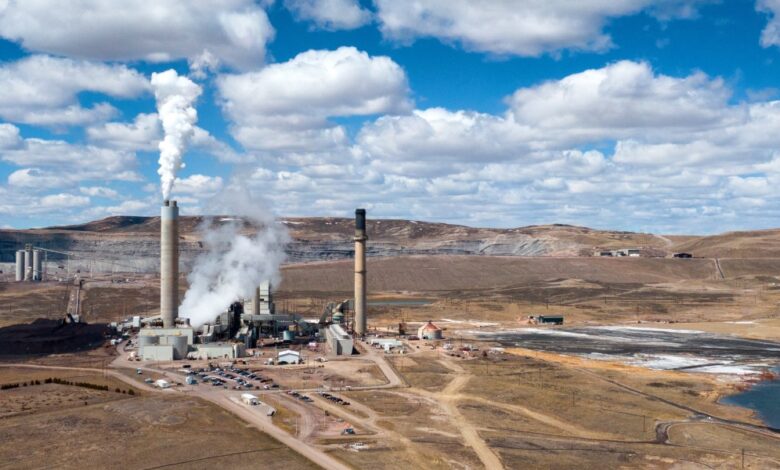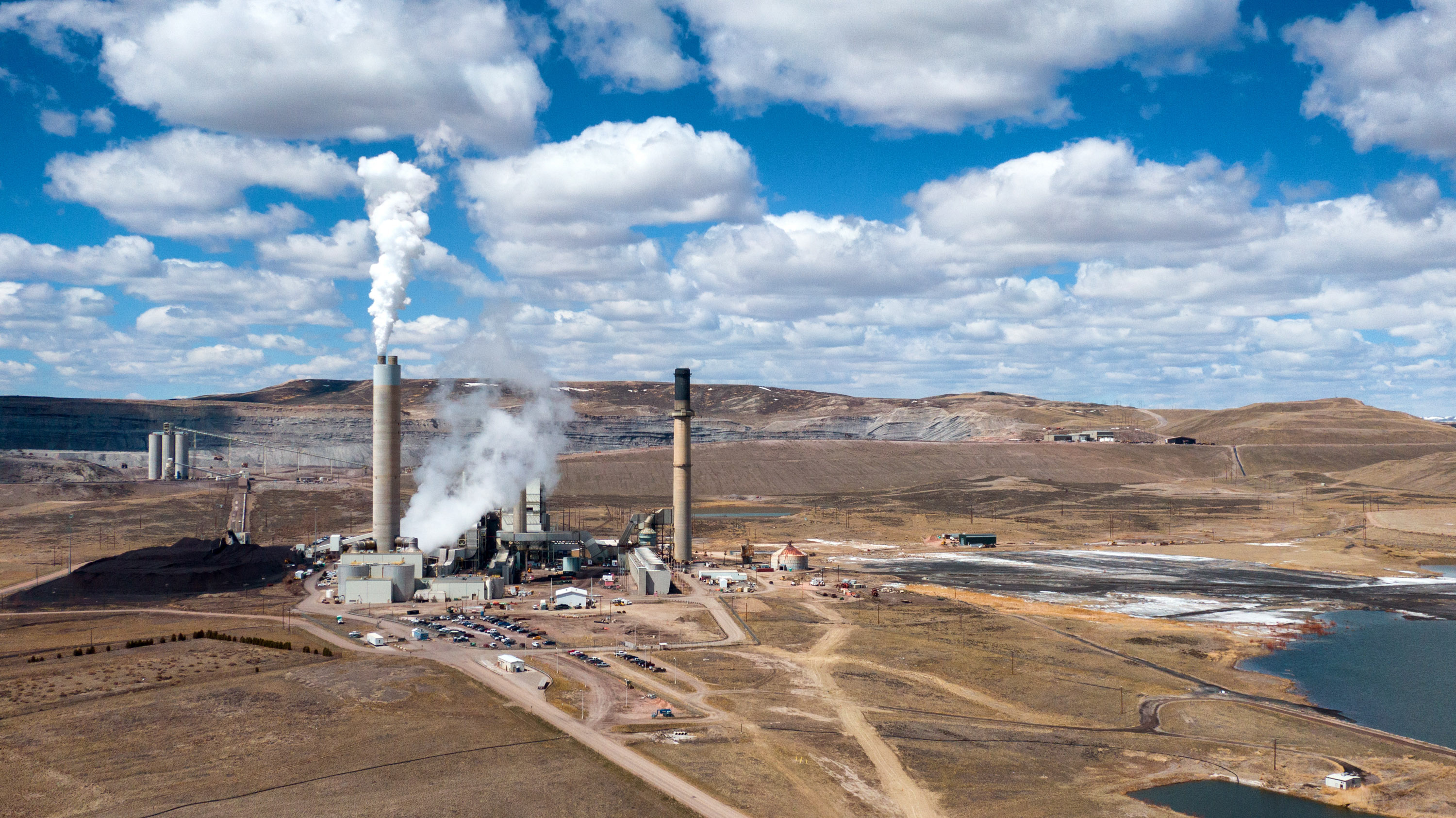The SEC’s new climate rules were a missed opportunity to accelerate corporate action

Lobbying forced the agency to water down its climate disclosure regulations, protecting fossil-fuel interests.

This week, the US Securities and Exchange Commission enacted a set of long-awaited climate rules, requiring most publicly traded companies to disclose their greenhouse-gas emissions and the climate risks building up on their balance sheets.
Unfortunately, the federal agency watered down the regulations amid intense lobbying from business interests, undermining their ultimate effectiveness—and missing the best shot the US may have for some time at forcing companies to reckon with the rising dangers of a warming world.
These new regulations were driven by the growing realization that climate risks are financial risks. Global corporations now face climate-related supply chain disruptions. Their physical assets are vulnerable to storms, their workers will be exposed to extreme heat events, and some of their customers may be forced to relocate. There are fossil-fuel assets on their balance sheets that they may never be able to sell, and their business models will be challenged by a rapidly changing planet.
These are not just coal and oil companies. They are utilities, transportation companies, material producers, consumer product companies, even food companies. And investors—you, me, your aunt’s pension—are buying and holding these fossilized stocks, often unknowingly.
Investors, policymakers, and the general public all need clearer, better information on how businesses are accelerating climate change, what they are doing to address those impacts, and what the cascading effects could mean for their bottom line.
The new SEC rules formalize and mandate what has essentially been a voluntary system of corporate carbon governance, now requiring corporations to report how climate-related risks may affect their business.
They also must disclose their “direct emissions” from sources they own or control, as well as their indirect emissions from the generation of “purchased energy,” which generally means their use of electricity and heat.
But crucially, companies will have to do so only when they determine that the information is financially “material,” providing companies considerable latitude over whether they do or don’t provide those details.
The original draft of the SEC rules would have also required corporations to report emissions from “upstream and downstream activities” in their value chains. That generally refers to the associated emissions from their suppliers and customers, which can often make up 80% of a company’s total climate pollution.
The loss of that requirement and the addition of the “materiality” standard both seem attributable to intense pressure from business groups.
To be sure, these rules should help make it clearer how some companies are grappling with climate change and their contributions to it. Out of legal caution, plenty of businesses are likely to determine that emissions are material.
And clearer information will help accelerate corporate climate action as firms concerned about their reputation increasingly feel pressure from customers, competitors, and some investors to reduce their emissions.
But the SEC could and should have gone much further.
After all, the EU’s similar policies are much more comprehensive and stringent. California’s emissions disclosure law, signed this past October, goes further still, requiring both public and private corporations with revenues over $1 billion to report every category of emissions, and then to have this data audited by a third party.
Unfortunately, the SEC rules merely move corporations to the starting line of the process required to decarbonize the economy, at a time when they should already be deep into the race. We know these rules don’t go far enough, because firms already following similar voluntary protocols have shown minimal progress in reducing their greenhouse-gas emissions.
The disclosure system upon which the SEC rules are based faces two underlying problems that have limited how much and how effectively any carbon accounting and reporting can be put to use.
First: problems with the data itself. The SEC rules grant firms significant latitude in carbon accounting, allowing them to set different boundaries for their “carbon footprint,” model and measure emissions differently, and even vary how they report their emissions. In aggregate, what we will end up with are corporate reports of the previous year’s partial emissions, without any way to know what a company actually did to reduce its carbon pollution.
Second: limitations in how stakeholders can use this data. As we’ve seen with voluntary corporate climate commitments, the wide variations in reporting make it impossible to compare firms accurately. Or as the New Climate Institute argues, “The rapid acceleration in the volume of corporate climate pledges, combined with the fragmentation of approaches and the general lack of regulation or oversight, means that it is more difficult than ever to distinguish between real climate leadership and unsubstantiated greenwashing.”
Investor efforts to evaluate carbon emissions, decarbonization plans, and climate risks through ESG (environmental, social, and governance) rating schemes have merely produced what some academics call “aggregate confusion.” And corporations have faced few penalties for failing to clearly disclose emissions or even meet their own standards.
All of which is to say that a new set of SEC carbon accounting and reporting rules that largely replicate the problems with voluntary corporate action, by failing to require consistent and actionable disclosures, isn’t going to drive the changes we need, at the speed we need.
Companies, investors, and the public require rules that drive changes inside companies and that can be properly assessed from outside them.
This system needs to track the main sources of corporate emissions and incentivize companies to make real investments in efforts to achieve deep emissions cuts, both within the company and across its supply chain.
The good news is that even though the rules in place are limited and flawed, regulators, regions, and companies themselves can build upon them to move toward more meaningful climate action.
The smartest firms and investors are already going beyond the SEC regulations. They’re developing better systems to track the drivers and costs of carbon emissions, and taking concrete steps to address them: reducing fuel use, building energy-efficient infrastructure, and adopting lower-carbon materials, products, and processes.
It is now just good business to look for carbon reductions that actually save money.
The SEC has taken an important, albeit flawed, first step in nudging our financial laws to recognize climate impacts and risks. But regulators and corporations need to pick up the pace from here, ensuring that they’re providing a clear picture of how quickly or slowly companies are moving as they take the steps and make the investments needed to thrive in a transitioning economy—and on an increasingly risky planet.
Dara O’Rourke is an associate professor and co-director of the master of climate solutions program at the University of California, Berkeley.


